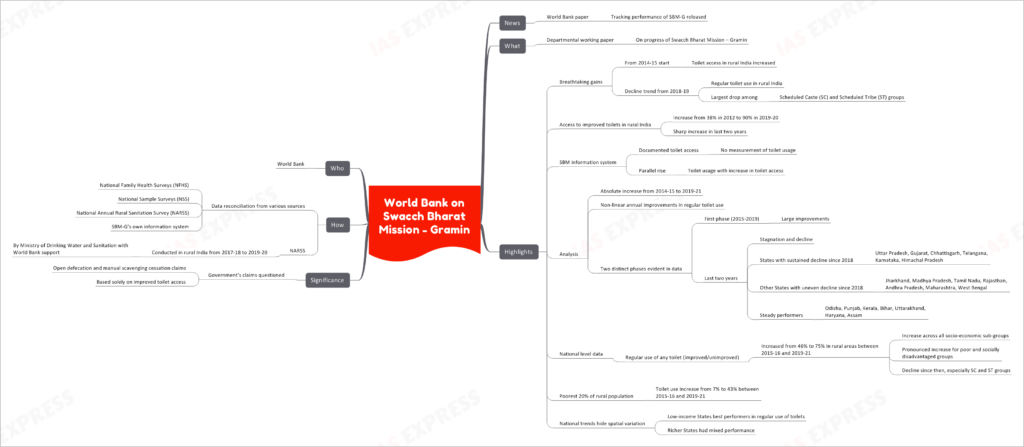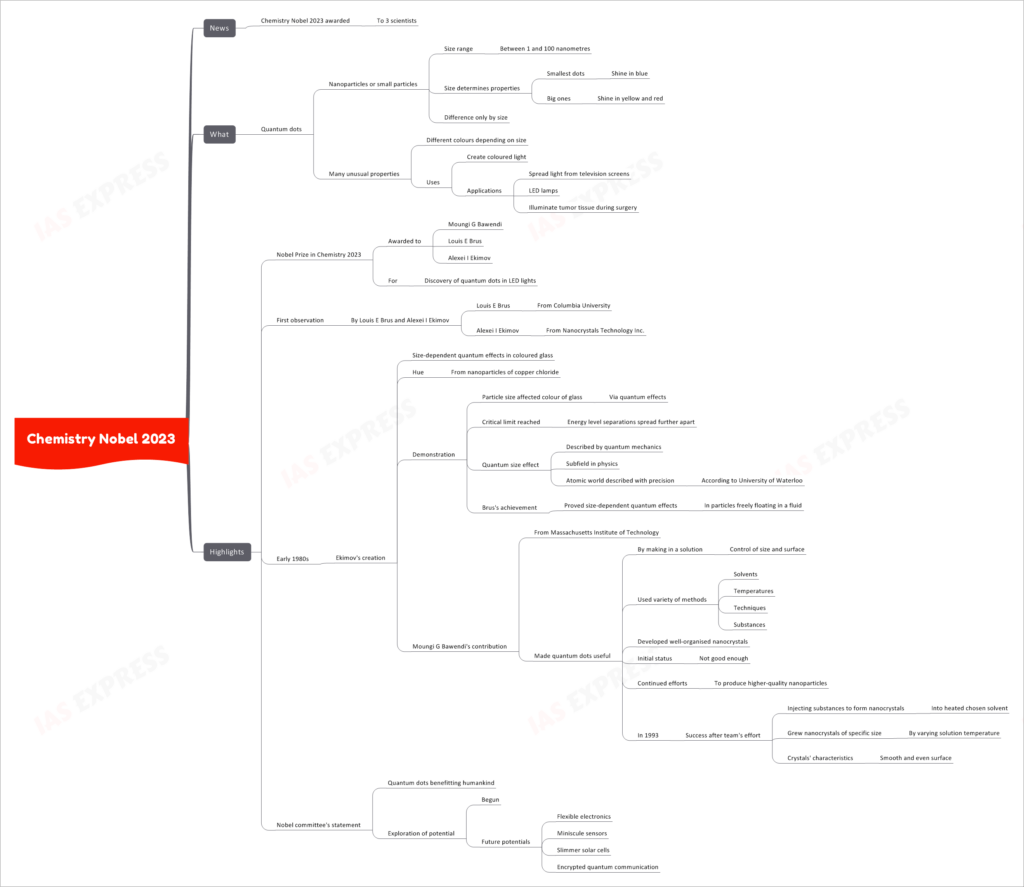[Newsbits] 04.10.2023

Armenia in ICC
In a significant move, Armenia's Parliament has voted to become a member of the International Criminal Court (ICC), marking a pivotal moment in international relations.
The Significance
Strained Relations with Russia
Armenia's decision to join the ICC comes amid already strained relations with Russia. The ICC has issued an arrest warrant for Russian President Vladimir Putin in connection with events in Ukraine, particularly related to war crimes concerning child deportation. The implications of Armenia's ICC membership are noteworthy, as ICC member countries are obligated to arrest individuals with ICC arrest warrants if they set foot on their soil, including President Putin.
The Trigger
Azerbaijan's Aggression
This move by Armenia is primarily triggered by Azerbaijan's recent aggression and territorial disputes in the region. The relations between Armenia and Russia have also faced challenges in recent years due to several complex factors.
The 2020 Moscow-Brokered Deal
In 2020, a Moscow-brokered deal brought an end to a six-week war between Armenia and Azerbaijan. Under this agreement, Armenia ceded territories, particularly in and around Nagorno-Karabakh, to Azerbaijan. Russia played a crucial role by sending peacekeepers to the region. However, tensions flared as Armenia accused Russian peacekeeping troops of failing to prevent further hostilities, resulting in Azerbaijan taking full control of the region.
Accusations and Geopolitical Shifts
The rift deepened as the Kremlin accused Armenia of acknowledging Azerbaijan's sovereignty over Nagorno-Karabakh, a move seen as distancing itself from Moscow. Armenia's hosting of U.S. troops for military drills and the potential consideration of exiting the Collective Security Treaty Organisation (a Moscow-led alliance) further fueled these accusations. Other factors adding complexity to the relationship include Armenia hosting a Russian military base and Russian border guards patrolling the Armenia-Turkey frontier.
The Timeline
Over Two Decades in the Making
Armenia's journey towards joining the ICC began over two decades ago. In 2004, a Constitutional Court ruling cited a contradiction between the Rome Statute (the treaty establishing the ICC) and Armenia's constitution at the time, temporarily halting the process.
Constitutional Amendments
Since that time, constitutional amendments have taken place, culminating in a recent ruling in March. The Constitutional Court confirmed the alignment between the Rome Statute and Armenia's current constitution, effectively reviving the ICC accession process.
DHPPI Vaccine
In a pioneering move, the Bruhat Bengaluru Mahanagara Palike (BBMP), the civic body of Bengaluru, has embarked on an ambitious initiative to administer the DHPPI vaccine to stray dogs within the city. This marks the first time that a civic body has undertaken such an effort, with the primary aim of safeguarding stray canines from a range of diseases.
The BBMP's DHPPI Vaccine Initiative
Protecting the Vulnerable
The BBMP's decision to administer the DHPPI vaccine to stray dogs is driven by the noble intention of safeguarding these vulnerable animals from a multitude of diseases. Stray dogs often face health challenges due to their living conditions, and this initiative seeks to address this issue.
The Tender Process
To kickstart this initiative, the BBMP has initiated the tender process for procuring the DHPPI vaccine vials. The entire process is conducted through e-procurement, ensuring transparency and efficiency. This initiative complements the ongoing anti-rabies vaccination program, reinforcing the BBMP's commitment to animal welfare.
A Comprehensive Administration Plan
Administering the DHPPI vaccine to stray dogs involves a well-thought-out plan. The BBMP intends to catch stray dogs and vaccinate them, ensuring that they receive the necessary protection against diseases. To prevent repetition, a sophisticated approach is considered: geo-tagging on dogs or inserting a microchip after vaccination and sterilization, making it easier to track and manage the vaccination process effectively.
Understanding the DHPPI Vaccine
A Live Attenuated Vaccine
The DHPPI vaccine, in essence, is a live attenuated vaccine designed to immunize dogs against a spectrum of diseases. It stands for:
- D: Canine Distemper Virus
- H: Hepatitis (Caused by Adenoviruses)
- P: Parainfluenza Virus
- P: Parvovirus
Shielding Against 5 Diseases
The DHPPI vaccine serves as a shield against five different diseases that pose a threat to dogs' health and well-being:
1. Canine Distemper Virus
- Highly Contagious: Canine distemper is a highly contagious virus that primarily affects dogs.
- Symptoms: The virus manifests with symptoms like fever, nasal discharge, coughing, and neurological signs. It often involves multiple organs.
- Transmission: Canine distemper is transmitted through respiratory secretions.
2. Adenoviruses (Hepatitis and Kennel Cough)
- Diseases: Adenoviruses are responsible for diseases such as hepatitis and kennel cough.
- Kennel Cough: Kennel cough is a contagious respiratory disease caused by multiple pathogens, including bacteria and viruses. It leads to symptoms like a dry, persistent cough and nasal discharge.
3. Parainfluenza Virus
- Highly Contagious: Parainfluenza is another highly contagious respiratory disease in dogs.
- Cause: It is caused by a virus.
- Symptoms: Dogs infected with parainfluenza display symptoms like coughing, sneezing, and nasal discharge. While it's usually mild, it can be severe in puppies or dogs with weakened immune systems.
4. Parvovirus
- Highly Contagious: Parvovirus is a highly contagious gastrointestinal disease.
- Symptoms: It leads to severe vomiting, diarrhea, lethargy, and loss of appetite. Without prompt treatment, it can be deadly.
Administration Typically for Pet Dogs
It's important to note that the administration of the DHPPI vaccine is typically targeted towards pet dogs. However, the BBMP's initiative to extend this vaccination to stray dogs in Bengaluru underscores the significance of protecting all canines, regardless of their living conditions.
World Bank on Swacch Bharat Mission – Gramin
The World Bank has released a departmental working paper that meticulously tracks the performance of the Swacch Bharat Mission – Gramin (SBM-G). This paper scrutinizes the progress of SBM-G and raises important questions regarding the government's claims about open defecation cessation and the eradication of manual scavenging.
Understanding the Essence
SBM-G in Focus
The departmental working paper delves deep into the heart of the Swacch Bharat Mission – Gramin (SBM-G) to assess its impact and trajectory.
Noteworthy Gains
From its inception in 2014-15, SBM-G achieved remarkable gains in terms of toilet access in rural India. However, the data reveals a decline trend that emerged from 2018-19 onwards, particularly concerning the regular use of toilets in rural areas. This decline is most pronounced among the Scheduled Caste (SC) and Scheduled Tribe (ST) groups.
Soaring Toilet Access
The report showcases a substantial increase in access to improved toilets in rural India, surging from 38% in 2012 to an impressive 90% in 2019-20. This surge in access has been especially prominent in the last two years.
SBM Information System
The SBM information system plays a pivotal role in documenting toilet access. However, it is important to note that this system does not measure toilet usage. Intriguingly, the data suggests a parallel rise in toilet usage along with the increase in toilet access.
Data Analysis
The report conducts a comprehensive analysis, examining the absolute increase in SBM-G progress from 2014-15 to 2019-21. It identifies non-linear annual improvements in regular toilet use and identifies two distinct phases in the data:
- First Phase (2015-2019): During this period, large improvements were observed.
- Last Two Years: In contrast, the data shows stagnation and decline, particularly in states like Uttar Pradesh, Gujarat, Chhattisgarh, Telangana, Karnataka, and Himachal Pradesh. Other states also exhibited uneven declines since 2018, including Jharkhand, Madhya Pradesh, Tamil Nadu, Rajasthan, Andhra Pradesh, Maharashtra, and West Bengal. However, some states like Odisha, Punjab, Kerala, Bihar, Uttarakhand, Haryana, and Assam maintained steady performance.
National-Level Trends
At the national level, data indicates that the regular use of any toilet (improved/unimproved) increased from 46% to 75% in rural areas between 2015-16 and 2019-21. This increase cut across all socio-economic sub-groups, with a particularly pronounced rise among the poor and socially disadvantaged groups. However, there has been a decline since then, especially among the SC and ST groups.
Bridging the Gap
The poorest 20% of the rural population experienced a significant increase in toilet use, rising from a mere 7% to an encouraging 43% between 2015-16 and 2019-21.
Spatial Variations
The report underscores the importance of recognizing spatial variation in the SBM-G's performance. Interestingly, low-income states have emerged as the best performers in terms of regular toilet use, while richer states displayed mixed results.
The Significance
The departmental working paper raises important questions about the government's claims regarding the cessation of open defecation and manual scavenging. These claims are primarily based on improved toilet access, and the report highlights the need for a more comprehensive assessment that includes toilet usage.
Unraveling the Data
The assessment involved data reconciliation from various sources, including the National Family Health Surveys (NFHS), National Sample Surveys (NSS), National Annual Rural Sanitation Survey (NARSS), and SBM-G's own information system. Notably, the NARSS, conducted in rural India from 2017-18 to 2019-20 with World Bank support, played a crucial role in gathering key data.
The World Bank's Role
The World Bank, in collaboration with the Ministry of Drinking Water and Sanitation, has been instrumental in conducting this assessment and shedding light on the performance and challenges of SBM-G.
Glacial Lake
Amid the tranquil landscapes of North Sikkim, a cataclysmic event recently unfolded—the outburst of the South Lhonak glacial lake. This unleashed a torrential flood, wreaking havoc downstream as it swept away major highways and settlements in its path.
Unveiling the Characteristics
A Glacial-Moraine-Dammed Lake
The South Lhonak lake is classified as a glacial-moraine-dammed lake, nestled at a breathtaking altitude of 17,000 feet in North Sikkim. What sets this lake apart is its astonishing expansion rate, making it the fastest-expanding glacial lake in the Sikkim Himalayas.
Rapid Expansion Evidenced
According to the Sikkim Forest and Environment Department, recent decades have witnessed a dramatic increase in the lake's size. South Lhonak has grown nearly 2.5 times since 1989, while Lhonak itself has expanded by nearly 1.5 times during the same period.
Unraveling the Enigma
A Water Body Born of Glacial Activity
South Lhonak is a water body born from the remnants of glacial activity, making it a fascinating subject of study.
Geological Information Treasure Trove
The lake bed is rich in sediments—carried by glaciers over time—that hold invaluable geological information. These sediments, if preserved, can provide insights into fossils, landmass formation, and the earth's history.
Varves and Rock Formations
Varves, which are annually laminated sediments, resemble tree rings and offer insights into the lake's age, past climate, and glacier dynamics. Additionally, rock formations within the lake, including striations and physical weathering patterns, provide essential paleoclimatic information.
The Birth of Glacial Lakes
Glaciers: Nature's Sculptors
Glacial lakes like South Lhonak form due to the retreat of glaciers. Glaciers, composed of compressed layers of snow, form at high altitudes and slowly move down mountain slopes when they become sufficiently heavy.
The Moraine Factor
As glaciers move, they scrape the mountain surface, creating wrinkles in the surrounding land and displacing debris. This debris, called moraine, acts as a natural barrier, preventing meltwater from the glacier's tail from flowing freely and leading to the formation of moraine-bound glacial lakes, such as South Lhonak.
Another Lake Variety
In contrast, some glacial lakes are bound by ice. These form when a moving glacier settles in a deepened land, effectively blocking meltwater from a stationary glacier through higher landmass and the glacier's own ice.
Factors Influencing Stability
The Role of Meteorological Conditions
The stability of glacial lakes is contingent on meteorological conditions in the region, particularly in the context of temperature and precipitation patterns.
Physical Triggers: Earthquakes and Loose Debris
For moraine-dammed glacial lakes, the presence of loose debris within the moraine is a critical factor. When this debris shifts, it can cause leakages or outbursts, leading to massive flooding downstream.
Intervention: Taming South Lhonak
In 2016, recognizing the looming threat, various agencies, including the Sikkim State Disaster Management Authority and Sikkim's Department of Science, Technology, and Climate Change, embarked on an ambitious mission. They decided to syphon off water from the South Lhonak Lake, enlisting the expertise of innovator Sonam Wangchuk.
The Syphoning Technique
This daring endeavor involved the installation of three eight-inch wide HDPE pipes, each measuring 130-140 meters in length, within the lake. These pipes facilitated the controlled syphoning off of water from South Lhonak at a rate of 150 liters per second, as reported by the Sikkim State Disaster Management Authority.
Chemistry Nobel 2023
In a recent groundbreaking announcement, the Nobel Prize in Chemistry for 2023 has been awarded to three distinguished scientists for their pioneering work in the realm of quantum dots. This prestigious recognition marks a significant milestone in the field of nanotechnology and its transformative impact on various applications, from LED lights to medical advancements. Let's delve into the details of this remarkable discovery.
What Are Quantum Dots?
Nanoparticles of Remarkable Potential
Quantum dots, at their core, are nanoparticles or incredibly tiny particles with sizes that fall within the range of 1 to 100 nanometres. It's important to note that the size of these quantum dots plays a pivotal role in determining their unique properties. These properties can vary significantly depending on their size, making quantum dots a versatile tool with a multitude of applications.
Size Dictates Their Properties
The most remarkable feature of quantum dots is how their size directly influences their behavior:
- Smallest Dots: Quantum dots at the lower end of the size spectrum tend to emit a brilliant blue light when stimulated.
- Larger Ones: As the size of quantum dots increases, their emitted light shifts towards the yellow and red spectrum.
Unusual Properties Abound
Quantum dots are not just limited to their size-dependent color variations. They exhibit numerous other exceptional characteristics, including:
- Diverse Colors: Quantum dots can produce a wide range of colors depending on their size, making them invaluable for creating vibrant displays and lighting.
- Applications Galore: These tiny wonders find use in an array of applications, such as enhancing the brightness and color accuracy of television screens, improving the efficiency of LED lamps, and even illuminating tumor tissue during delicate surgical procedures.
Highlights of the Nobel Prize in Chemistry 2023
The Laureates
This year's Nobel Prize in Chemistry is a tribute to the groundbreaking work of three exceptional scientists:
- Moungi G. Bawendi: Hailing from the Massachusetts Institute of Technology, Bawendi made quantum dots practical by developing methods to control their size and surface properties.
- Louis E. Brus: A researcher at Columbia University, Brus contributed to the understanding of size-dependent quantum effects in particles freely suspended in a fluid.
- Alexei I. Ekimov: Ekimov, affiliated with Nanocrystals Technology Inc., was one of the early pioneers who observed size-dependent quantum effects in colored glass back in the early 1980s.
The Genesis of Quantum Dots
- Louis E. Brus and Alexei I. Ekimov: The journey into the world of quantum dots began with Louis E. Brus and Alexei I. Ekimov. Ekimov's work in the early 1980s involved creating size-dependent quantum effects in colored glass, using nanoparticles of copper chloride. This work demonstrated how the size of particles directly impacted the color of glass, showcasing the role of quantum effects.
- Critical Quantum Size Effect: Brus took Ekimov's discoveries a step further by proving that size-dependent quantum effects weren't limited to glass; they applied to particles freely suspended in a fluid, as well. These breakthroughs provided a profound insight into the atomic world described with precision by quantum mechanics, a subfield in physics.
Moungi G. Bawendi's Contribution
- Harnessing Quantum Dots: Moungi G. Bawendi's contributions from MIT were instrumental in making quantum dots practical for a wide range of applications. He achieved this by developing methods to create quantum dots in a solution, allowing for precise control of their size and surface characteristics.
- Persistent Efforts: Bawendi's journey was not without challenges. Initially, the quality of nanocrystals produced was subpar. However, he and his team persisted in their efforts, leading to a breakthrough in 1993. They successfully grew nanocrystals of specific sizes by injecting substances into a carefully chosen, heated solvent. These nanocrystals exhibited smooth and even surfaces, paving the way for countless innovations.
Quantum Dots: A Benefit to Humankind
The Nobel committee's statement underscores the profound impact of quantum dots on humankind. This discovery has not only opened up new possibilities but has also paved the way for the exploration of untapped potential.
The Journey Begins
The journey of quantum dots began with the first observations of size-dependent quantum effects by Louis E. Brus and Alexei I. Ekimov in the early 1980s. These early breakthroughs set the stage for a transformative journey into the world of nanotechnology.
Future Potential
As we look to the future, the potential applications of quantum dots appear boundless. Some exciting prospects include the development of flexible electronics, minuscule sensors, more efficient and compact solar cells, and even encrypted quantum communication methods.
If you like this post, please share your feedback in the comments section below so that we will upload more posts like this.





